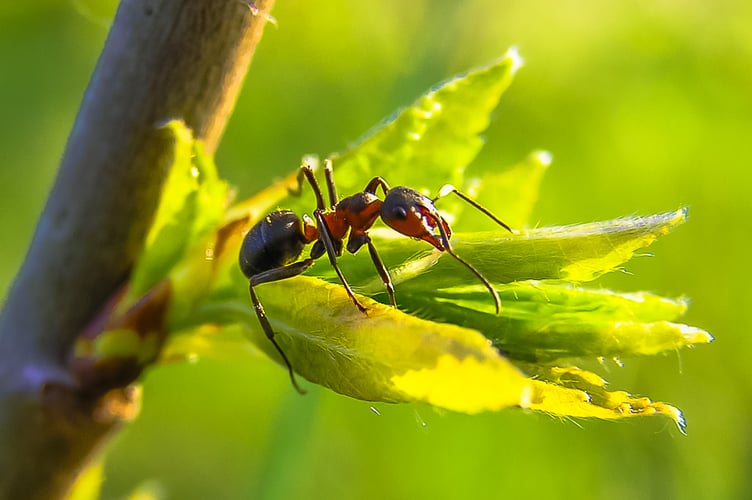Every stone I have moved in gardens this year seems to have had an ant’s nest under it. And a bit of research does actually reveal that their numbers are on the increase due to several factors, including environmental conditions and food availability.
It appears that the upheavals of climate change have favoured ants. Warming temperatures and extreme weather create drought-stricken landscapes and buildings shaken by storms, which allows these adaptable insects to conquer and colonise. Not only do ants capitalise on disorder and chaos but they also benefit hugely from our food waste.
As well as holding the record for the ‘fastest movement’ in the animal kingdom and being able to lift and carry 20 times their own body weight, recently bug boffins have found that some ants even amputate the injured limbs of their nest mates to prevent infection. The Florida carpenter ant is known to be viciously territorial, often getting into violent skirmishes with rival colonies and picking up combat wounds in the process. But rather than just licking the injuries clean as other species do, these clever critters bite the affected limb off – making them the only animal other than humans to conduct such amputations. And apparently it works with the procedures saving the patient from death 90 per cent of the time.

Last week saw the start of clouds of flying ants taking to the skies in an annual event that only begins when weather conditions are just right. Normally called ‘Flying Ant Day’, the amazing event is actually more like Flying Ant Fortnight – lasting much longer than a day and happening anytime between mid July and the beginning of August.
It is caused by the queen ants emerging and moving about to set up new homes; they are surrounded by males who are hoping to mate with the queen.
The temperature has to be just right for them to fly – above 25C but preferably nearer 30C and without too much wind. Last week’s temperatures and conditions were perfect which is why they were spotted for the first time this year – but the chances are there will be more ‘ant clouds’ to come. Like a lot of us, they will just be waiting for warmer conditions again.
I have seen a number of these swarms and they are incredible to see – just like a swarm of honey bees – as the sheer numbers are incredible.
The queen ant is over 10 times bigger than the smaller working ants which have been responsible for rearing her - and making her the queen that she is!
Even if you have witnessed these ‘ant clouds’ I bet what happens next will surprise you even more. The queen comes ‘back to earth’ where she cuts off her own wings, digs a hole to hide in and won't eat for at least a month. Instead she digests her own flight muscles until her new workers - all female - are ready to feed her.
Nature and the insect world never cease to amaze, enthral and impress.
All the males, on the other hand, live a brief life for a few months before they fly and try to mate, and then they die a few days after the flight. So, it’s more than likely all the ants you see on the ground – and under stones - will be female.
With just a couple of rare exceptions British ants fall into two categories - the stinging Myrmicine ants – or red ants and the non-stinging Formicine ants – black ants and wood ants which apart from being a different colour, have smoother and shorter bodies and much better temperaments.




